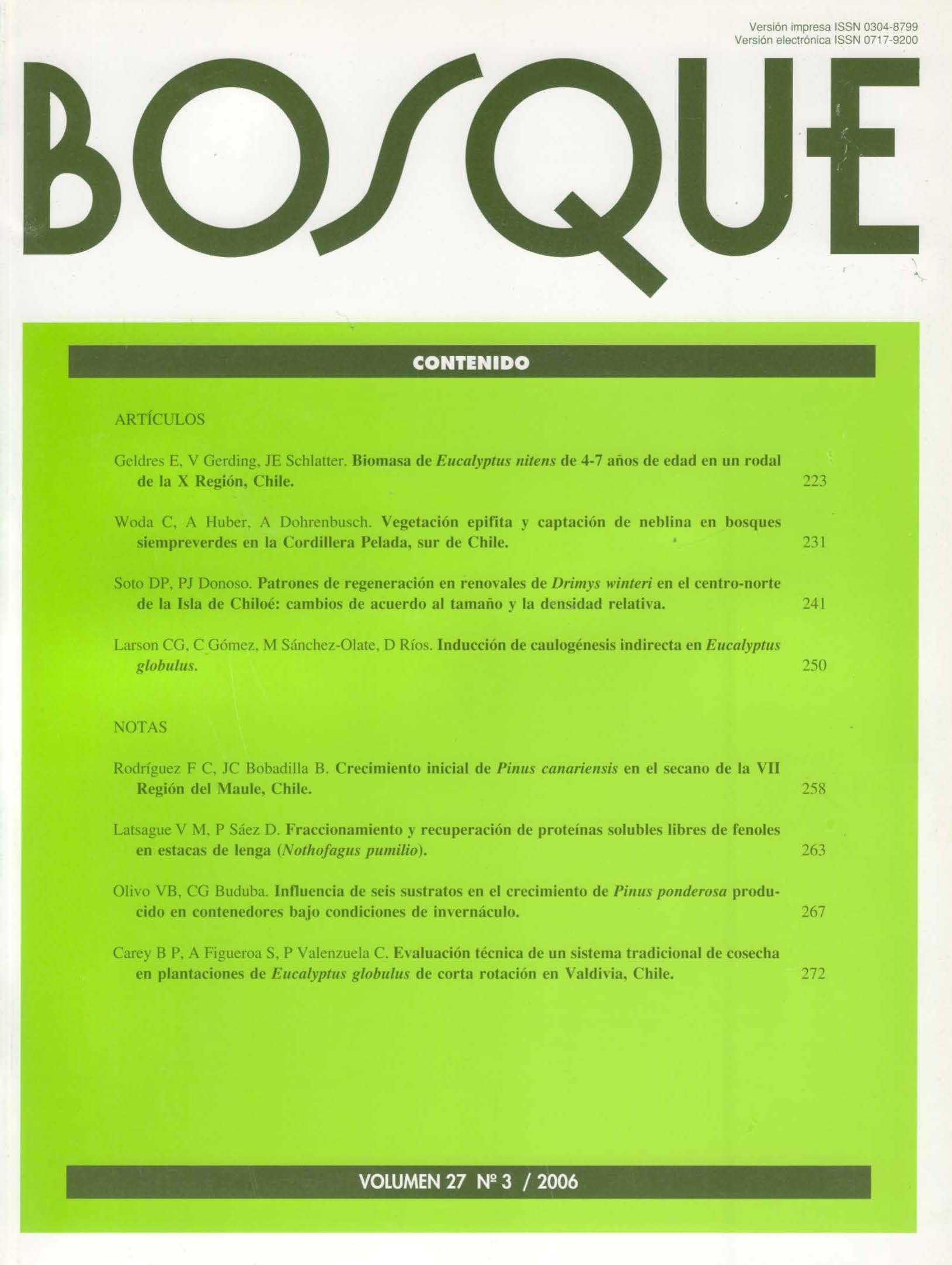Regeneration patterns for the Drimys winteri second-growth forests in north-central Chiloé Island: changes according to size and relative density
Main Article Content
Abstract
The present study aimed to register changes in regeneration density in Drimys winteri secondary forests in north-central Chiloé Island, according to size structure (dominant height, HT: < 16, 16-19 and >19 m), and quadratic mean diameter (QSD): < 12, 12 15 and > 15 cm), relative density (RD: < 80 and > 80 %), and slope (flat, 1-10 and 10-20). For this purpose 52 circular plots were sampled, each 200 to 400 m2 in size, on which the diameter of all trees ≥ 5 cm, the height of five dominant trees, and the slope of the plot were measured. In each plot, four regeneration plots were sampled, where seedlings (< 2 m tall) and saplings (≥ 2 m tall and < 5 cm in diameter) were tallied. Through analyses of variance and the least significant difference test we determined that: a) RD and slope did not have a significant effect on regeneration, b) regeneration of D. winteri and L. philippiana was significantly affected by size structure, both for saplings and seedlings, c) regeneration of Eucryphia cordifolia and Mirtaceae did not show significant differences according to size structure. Negative logarithmic regression models were obtained for D. winteri and E. cordifolia, and a power model was fitted for L. philippiana. Observed patterns of regeneration for regeneration density are consistent with the observed dominance of L. philippiana and Mirtaceae in old-growth forests of Chiloé.

